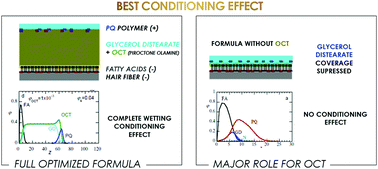Turning autophobic wetting on biomimetic surfaces into complete wetting by wetting additives
Abstract
Autophobicity or pseudo partial wetting, a phenomenon of a liquid not spreading on its own monolayer, is characterized by an energy barrier that prevents the growth of a wetting film beyond the monolayer thickness. Applying a molecularly detailed self-consistent field theory we illustrate how autophobic wetting can be overcome by wetting additives. More specifically we use an emulsifier which keeps the interfacial tension between the wetting component and the majority solvent low, and a co-solvent additive which partitions inside the film and then destroys the molecular order in it so that the barrier for film growth is cleared. An application wherein it is believed that autophobic wetting is counteracted by such a set of wetting additives is found in an antidandruff shampoo formulation. We have experimental results that show thick deposits onto hydrophobic hair surfaces by administration of the antidandruff shampoo. The complementary modeling of such a system suggests that the active ingredient plays the role of the co-solvent additive. As significant amounts of the co-solvent additives are needed to approach the completely wet state, the formulation naturally brings large amounts of active ingredient to the root of the hair where its presence is required.



 Please wait while we load your content...
Please wait while we load your content...